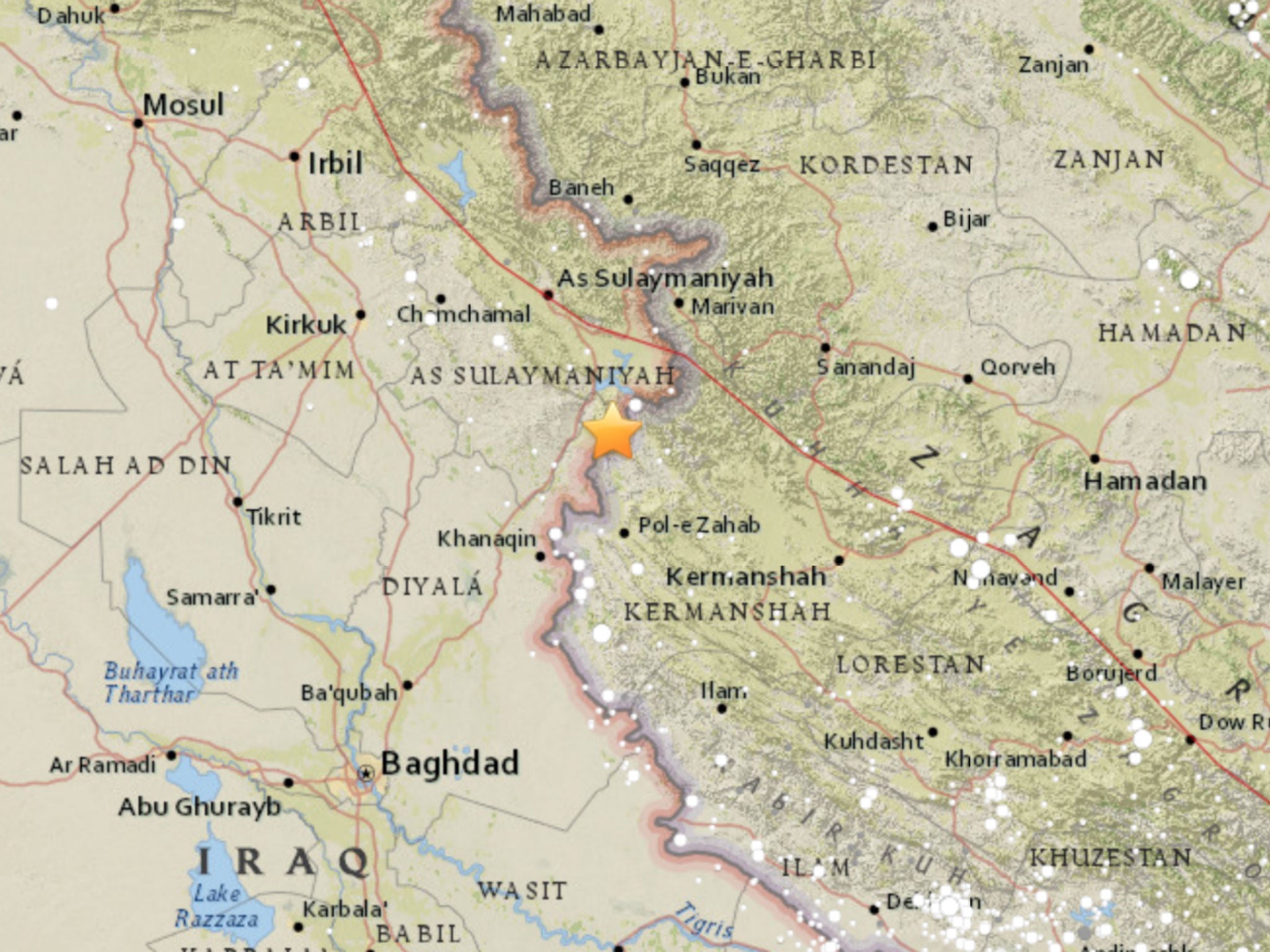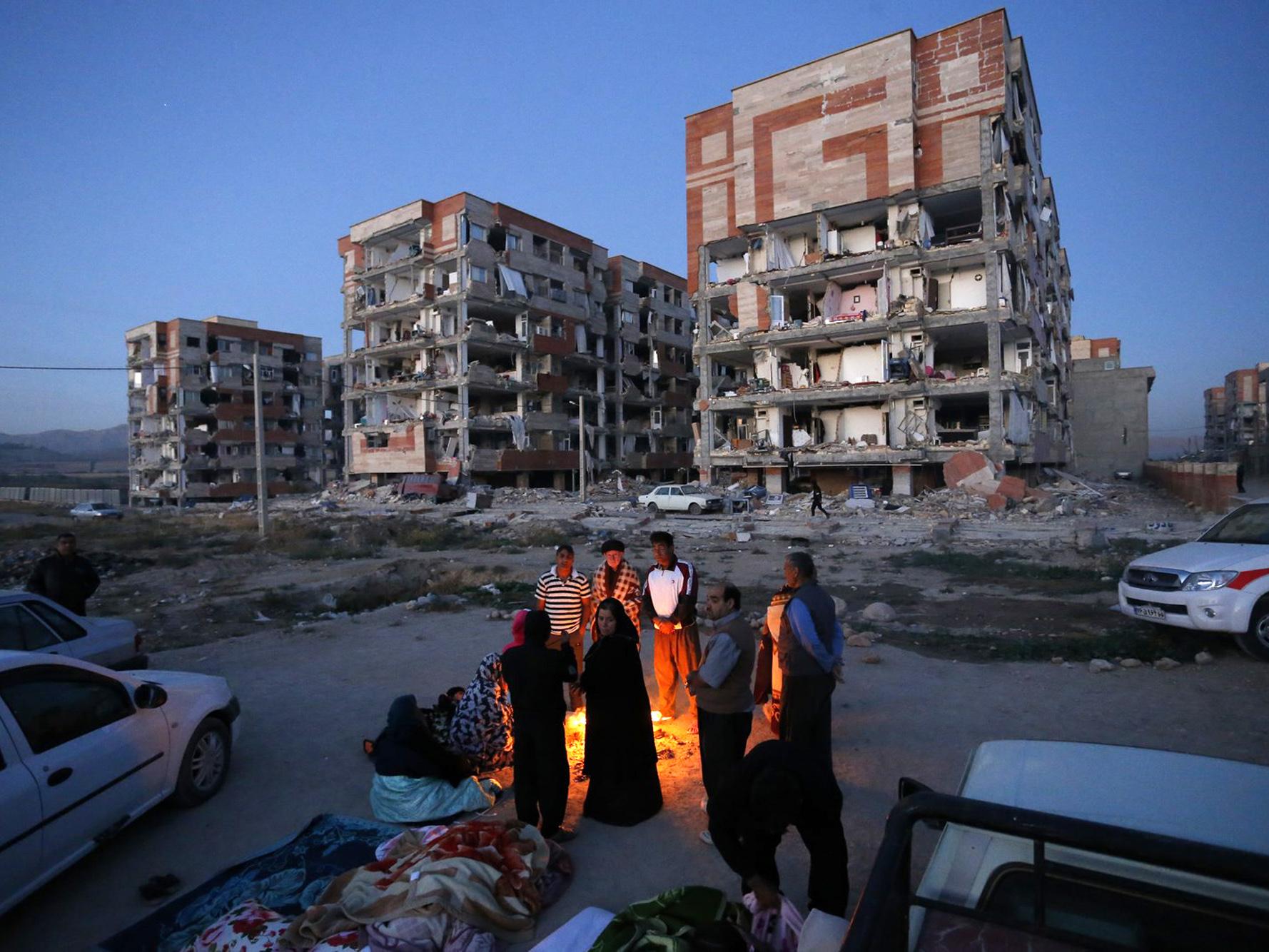Iran earthquake: Rescue workers resume hunt for survivors in quake-devasted border region
At least 530 people have died and more than 70,000 in need of emergency shelter after devastating earthquake on Iran-Iraq border
Your support helps us to tell the story
From reproductive rights to climate change to Big Tech, The Independent is on the ground when the story is developing. Whether it's investigating the financials of Elon Musk's pro-Trump PAC or producing our latest documentary, 'The A Word', which shines a light on the American women fighting for reproductive rights, we know how important it is to parse out the facts from the messaging.
At such a critical moment in US history, we need reporters on the ground. Your donation allows us to keep sending journalists to speak to both sides of the story.
The Independent is trusted by Americans across the entire political spectrum. And unlike many other quality news outlets, we choose not to lock Americans out of our reporting and analysis with paywalls. We believe quality journalism should be available to everyone, paid for by those who can afford it.
Your support makes all the difference.Rescue workers in Iran resumed work as soon as the sun rose on Tuesday in a search for people who may have survived a devastating earthquake which killed at least 530 people.
Diggers and other heavy equipment were used to shift the debris caused by the magnitude 7.3 earthquake which struck on Sunday evening. Many residents of the hardest hit town, Kurdish majority Sarpol-e-Zahab, scrabbled to help.
Entire apartment complexes in the town of 30,000 people collapsed. As time passes, hopes of finding survivors are being superseded by fear that many more bodies have not yet been retrieved.
President Hassan Rouhani has now launched an investigation into why government housing built by his hardline predecessor collapsed, while other withstood the disaster.
In the Kurdish town of Sarpol-e-Zahab, which was reconstructed in the decades since the 1980s war with Iraq, the outer walls of apartment complexes tumbled away in the magnitude 7.3 earthquake Sunday night. The housing was built as a part of the “Mehr” or “kindness” project of former President Mahmoud Ahmadinejad.
More than 70,000 people are now in need of emergency shelter in the cold November temperatures. Iranian television showed footage of people weeping next to dead bodies and huddling around fires for warmth.
Mr Rouhani arrived in Sarpol-e-Zahab’s province of Kermanshah on Tuesday to meet with residents and offer his sympathies.
“This was a pain for all Iranians,” he said, according to a statement on the president's website.

“Representing the nation of Iran, I offer my condolences to the people of Kermanshah, and tell them that all of us are behind Kermanshah.”
Cleric Abdolhossein Moezi, also touring the area on behalf of Supreme Leader Ayatollah Ali Khamenei, said there was a need for more relief material and “security.”
Tuesday was declared a day of mourning across the country.
“We need a shelter,” a middle-aged man told state TV. “Where is the aid? Where is the help?” His family could not spend another night outside in cold weather, he said.

Relief workers said while much aid had been pledged, there was an immediate need for blankets, children’s clothes, medicine and large cans to store drinking water.
Field hospitals were coping with the thousands of injured, although many were being sent for treatment in other cities.
Sunday’s magnitude 7.3 quake was centred 31 kilometres (19 miles) outside the eastern Iraqi city of Halabja, the US Geological Survey said.
It struck at a relatively shallow depth of 23.2 kilometres (14.4 miles), which usually leads to broader surface-level damage, and tremors recorded as far west as the Israeli coast of the Mediterranean and as far south as Baghdad.
Across the border in Iraq, the earthquake killed at least seven people and injured 535 others, all in the country’s northern, semi-autonomous Kurdish region, according to its Interior Ministry.
Many of the heavily damaged complexes in Sarpol-e-Zahab were part of construction projects begun under former hardline President Mahmoud Ahmadinejad. The disparity in the fatality figures between the two countries immediately drew questions from Iranians, especially because so much of the town was new.
Iran, which sits on several geological fault lines, is prone to earthquakes. A magnitude 6.6 quake in 2003 killed 26,000 in the city of Bam.
News agencies contributed to this report

Join our commenting forum
Join thought-provoking conversations, follow other Independent readers and see their replies
Comments